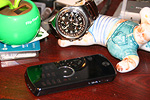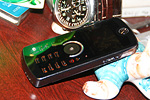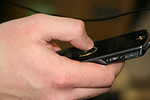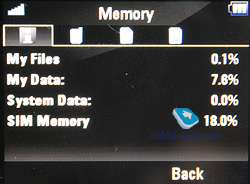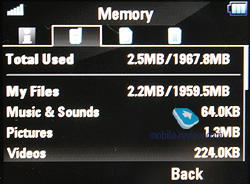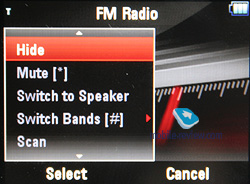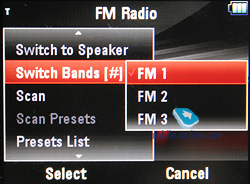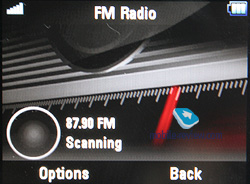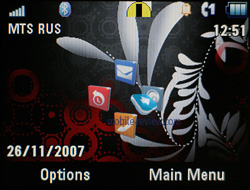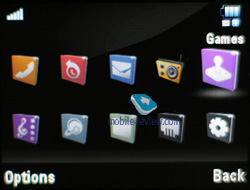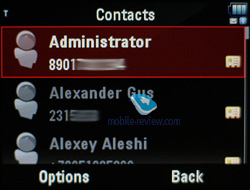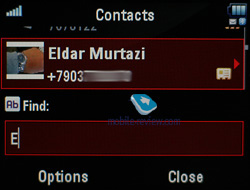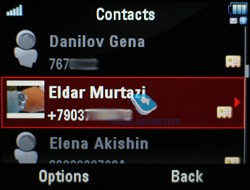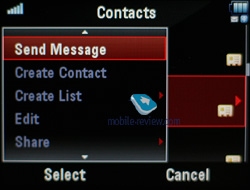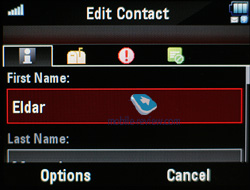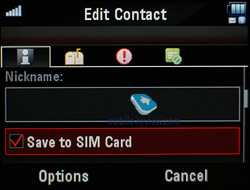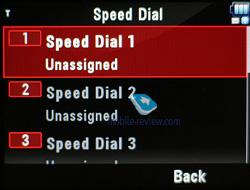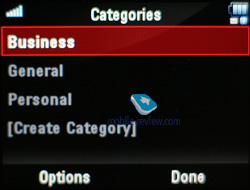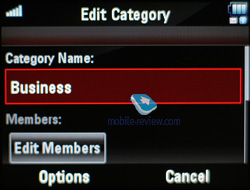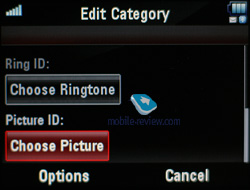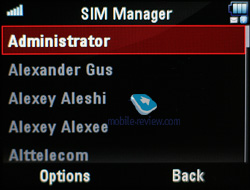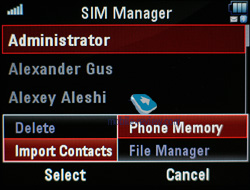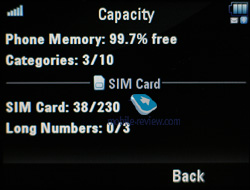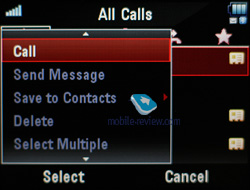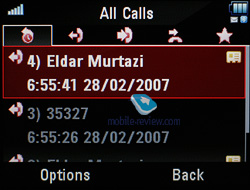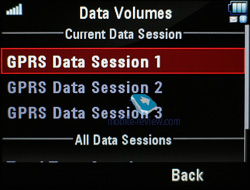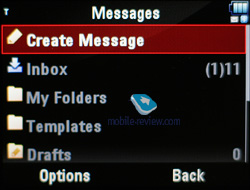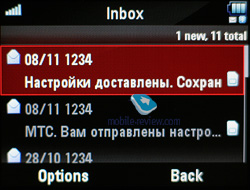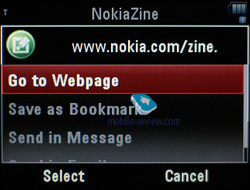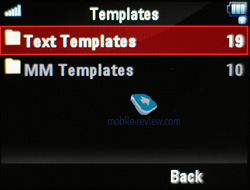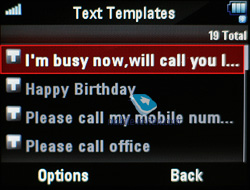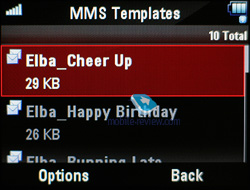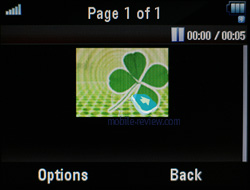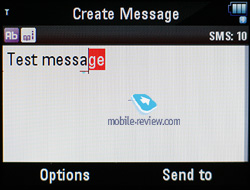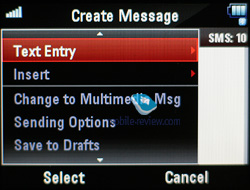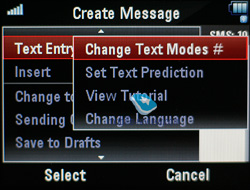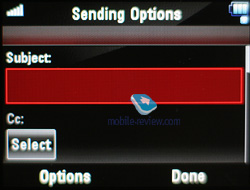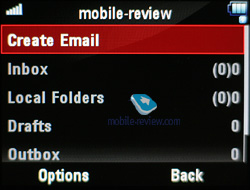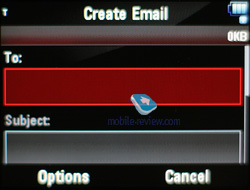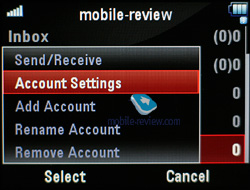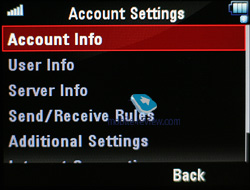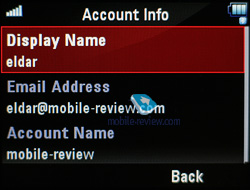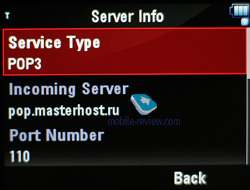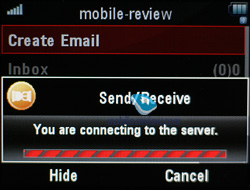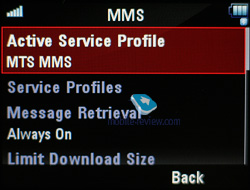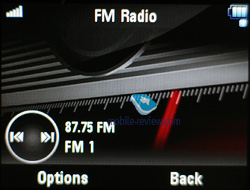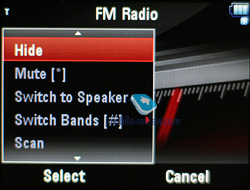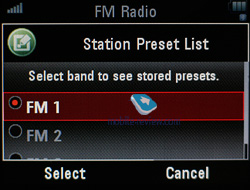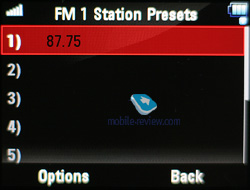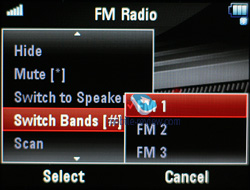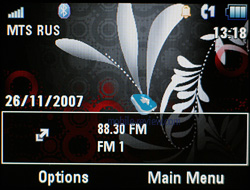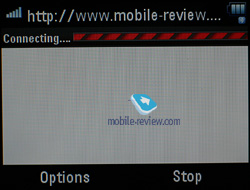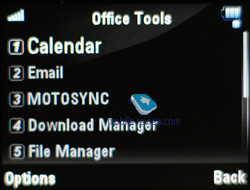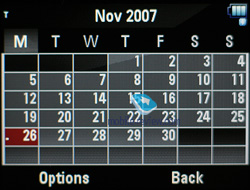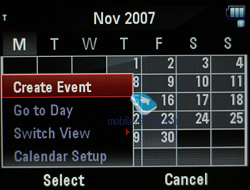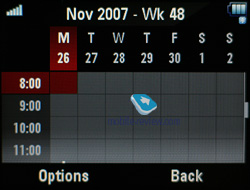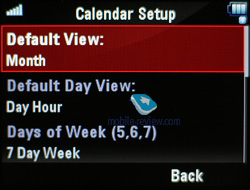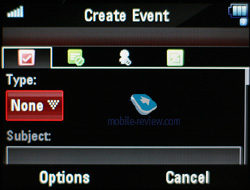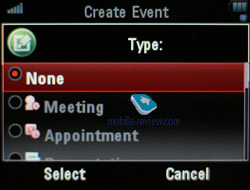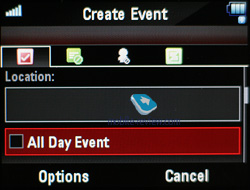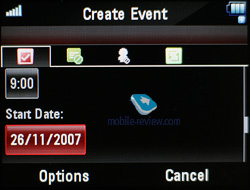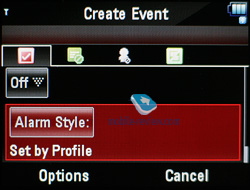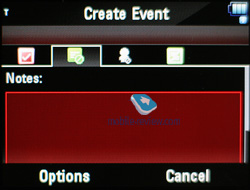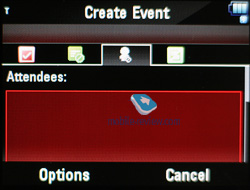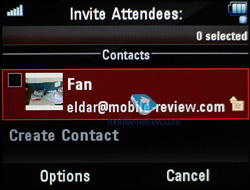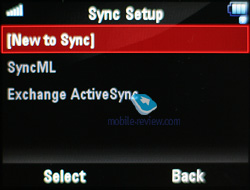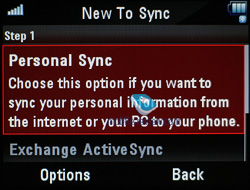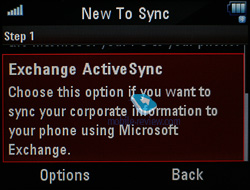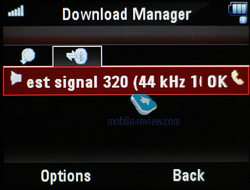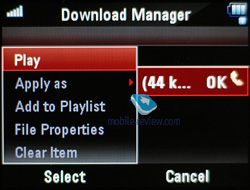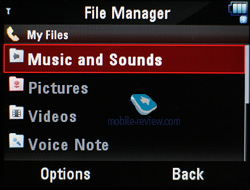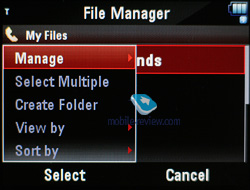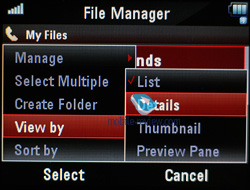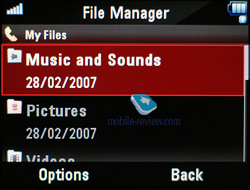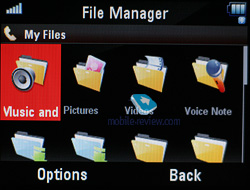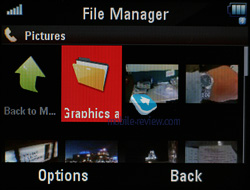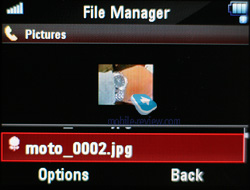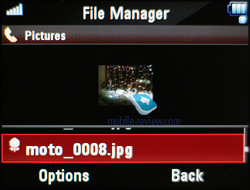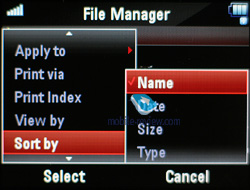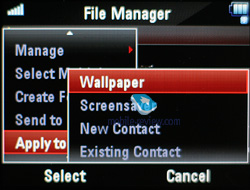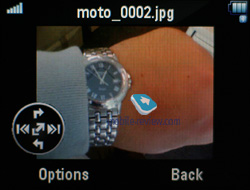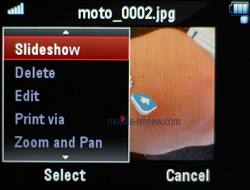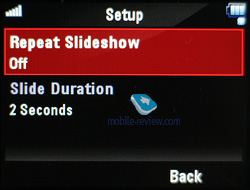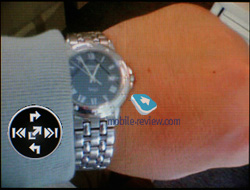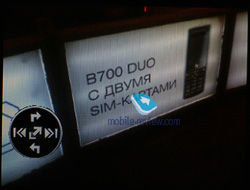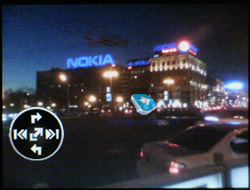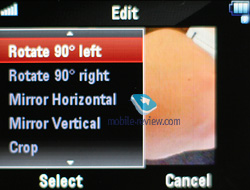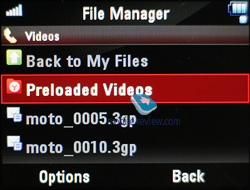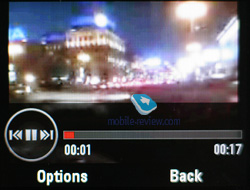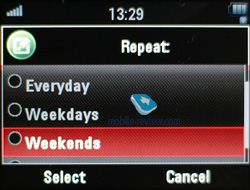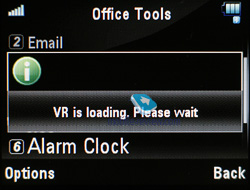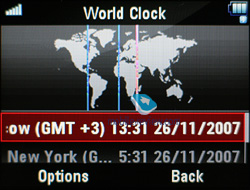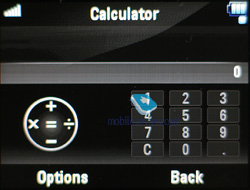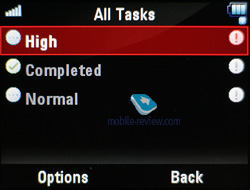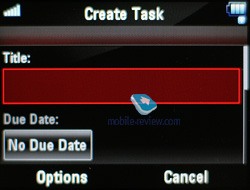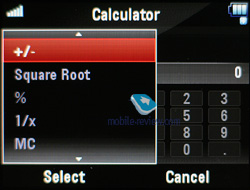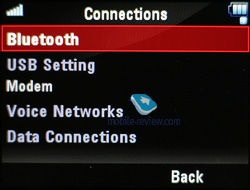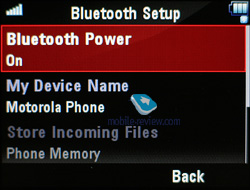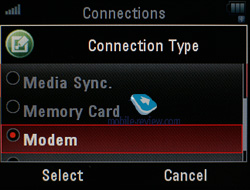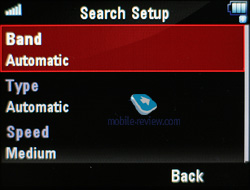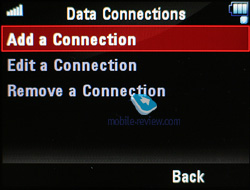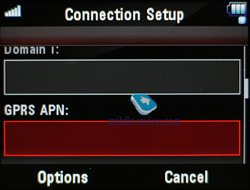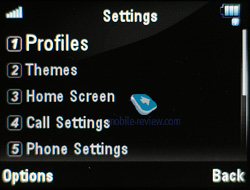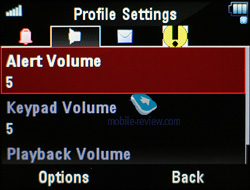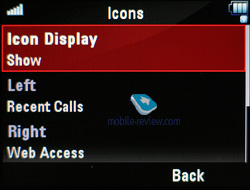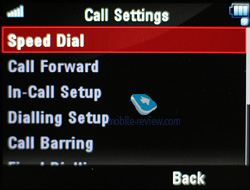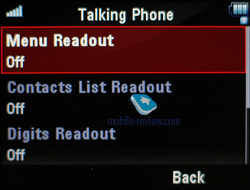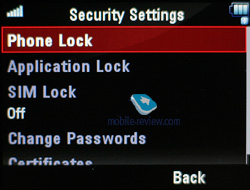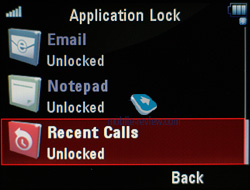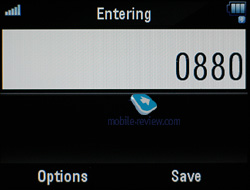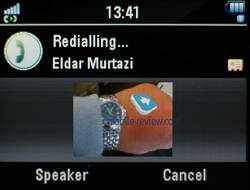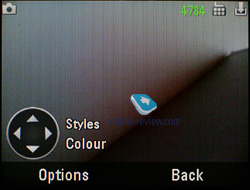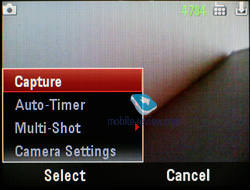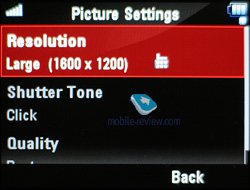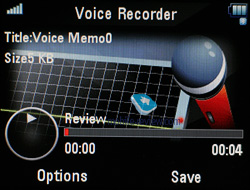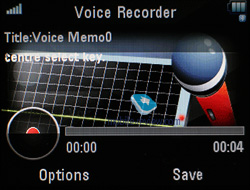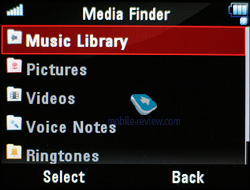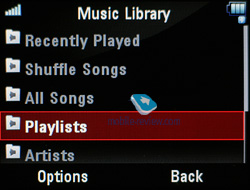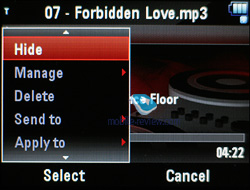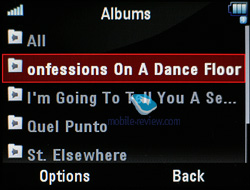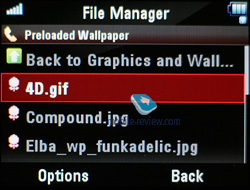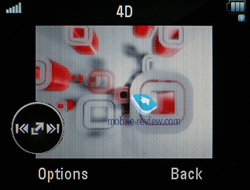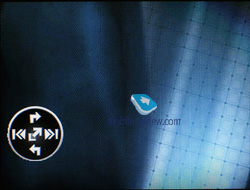|
|
Review of GSM-handset Motorola ROKR E8
Live photos of the Motorola ROKR E8
Table of contents:
- Positioning
- Design, size, ergonomics
- Display
- Keypad
- Memory, memory cards
- Battery
- Camera
- Performance
- USB, Bluetooth
- Music department
- Screenshots
- Impressions
Sales package:
- Handset
- 970 mAh Li-Ion battery
- microUSB data cable
- Wired stereo-headset
- User Guide
This is a preview of the Motorola ROKR E8, which will be updated as soon as it starts shipping!!!
Positioning
Some time ago Motorola decided to develop the range of music-minded phones; it started things off with the Motorola E2, which was a decent performer as far as sound quality goes, although it never became popular. In 2006 the manufacturer considered that the ROKR line-up had to be one of hottest offerings of the summer-fall season of 2007, however, in light of some problems with the creation of the LJ platform it had no real chance of success. The release date for this model was repeatedly postponed, which cast a shadow over its future. This made it all the more interesting to see how Motorola’s product placement campaign for this phone unfolded last summer; for example, Fergie’s video “Clumsy” actually featured the E8 for a whole 7 seconds. All this took place before the handset’s official announcement, as you might have already guessed. Then there is the lack of proper timing and cooperation between the company’s different divisions, but that’s another story. The fact of the matter is that because of this mess inside Motorola the ROKR E8 couldn’t make it to the market on time. Its software platform, to be more specific the L7.1, simply wasn’t delivered on time. As far as white papers are concerned, the ROKR E8 should differ tremendously from the Motorola U9 in most departments, however, in reality it doesn’t.
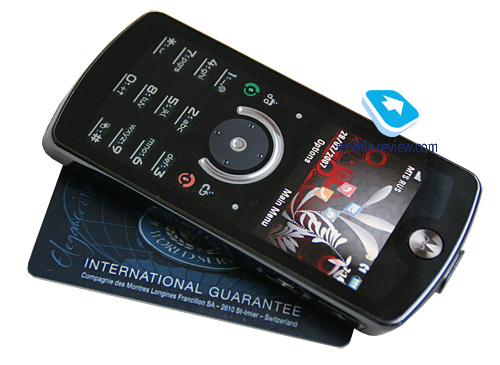
So the natural question everyone already has in mind is how this handset is positioned, and what products it competes with? The answer doesn’t take a rocket scientist to figure out, it is a music-centric phone, an interesting one at that, which aims to beat back the likes of the Nokia 5310 XpressMusic.
From Motorola’s point of view, this phone had to be the first mass music phone out there, but in reality this phone is very late to the market, which somewhat shifts the priorities and makes its price seem out of line with what it offers. The philosophy of the E8 is also questionable, the bundled storage of 2 Gb seems appropriate for an ordinary phone, but obviously not for a music-savvy device. Taking the availability of 8Gb microSD cards into account, the handset’s package of inbuilt storage and a memory expansion slot don’t seem to be of much interest. What they really had to do is shrink the inbuilt storage space down to the minimum and offer memory cards of different size in the box, but they didn’t do that, for exactly the same reason why they advertised the E8 long before its debut.
Motorola’s major flaw is still hazy positioning, as every product appears to be torn out of the line-up and acts on its own, seemingly oblivious to the continuity of the range or succession lines. So discussing the phone’s positioning in these circumstances is next to pointless; the E8 is just a music-focused solution, and will be guided on the market according to the dictates of the current situation, and that’s about it. Regrettably Motorola no longer shapes the market, and instead only tries to follow the latest and greatest trends, but without much spirit. It is a pity since the Motorola ROKR E8 employs some good, and interesting, ideas, which many manufacturers will add to their arsenals and intensively utilize in the future.
Back to the table of contents >>>
Design, size, ergonomics
The handset boasts catchy looks: beveled edges, the glossy plastic of the front fascia; the E8 simply oozes style. You can either love it or hate it, and the photos won’t help in making up your mind, as they can’t convey even a tenth of the handset’s charm In other words, it is the case, as if taken from the textbook, when there is no other way to figure out whether you like it or not except to have a hands-on session with the phone. The rear is decked out in metal, which has been so like Motorola over the past few years.
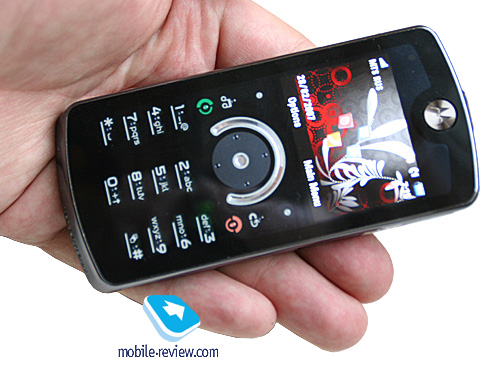

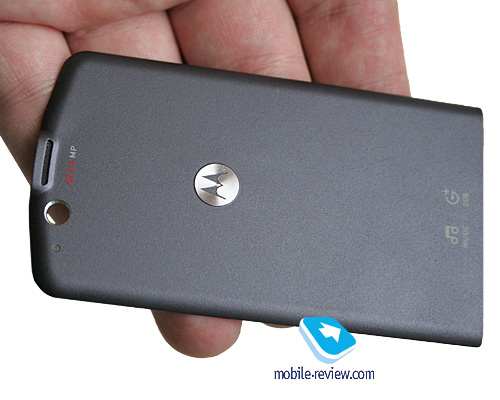
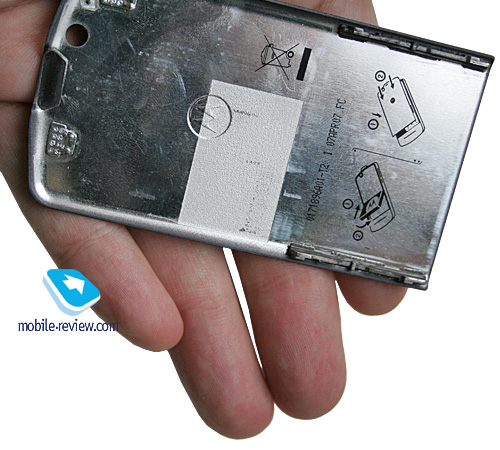
The handset measures 115x53x10.6 mm, so while it is relatively wide, it shows off a wafer-thin profile. It won’t weigh you shirt down, and it will also readily slip into a trousers pocket. The E8 weights 100 grams, which is par for the course for this type of phone. While in standby the handset won’t show you the keypad, which is one of its foremost traits that make it so quirky. We will give you a more detailed review of the unique technology used in the keypad, but for now let’s get back to the phone’s design.
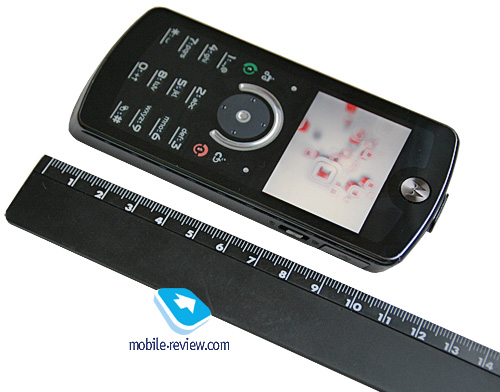
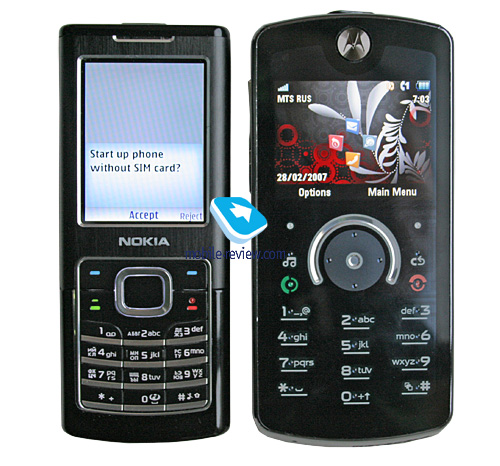

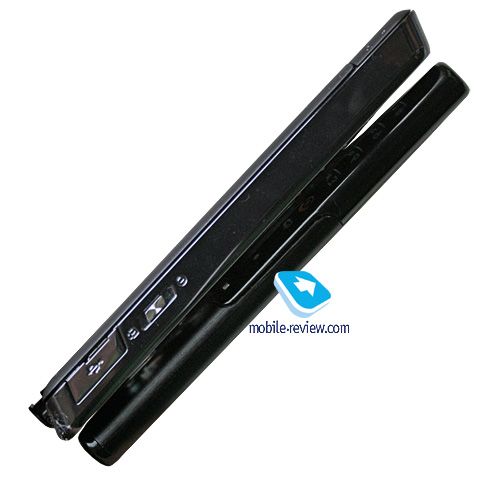
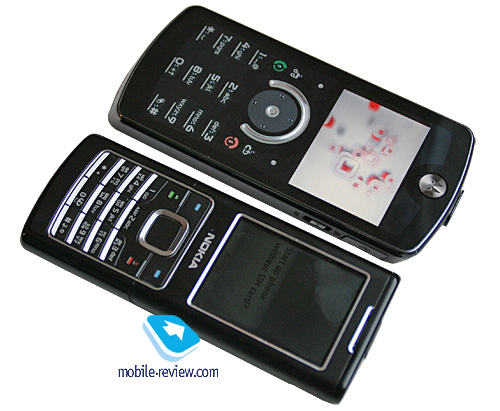
Many normally ask whether this or that phone is prone to smudge, with the E8’s glossy finish on the top the answer is right on the surface; it is a fingerprint-magnet. However, unlike most other offerings, surprisingly, you won’t really notice that if you are not going to inspect the handset closely. The explanation lies in the fact that with the backlighting activated mud and grease left on the surface keep a low profile and won’t catch your eye.
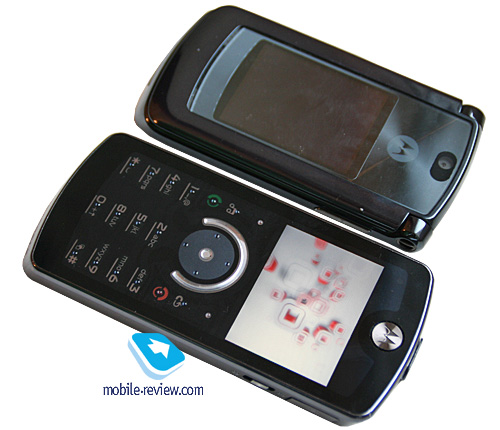
What we liked about the E8 is that it has a 3,5 mm jack mounted on the top end. While it is protected by a plastic flap, it is not linked to the casing, which means you can remove it as soon as you take the phone out of the box and forget about it since it has no real use.
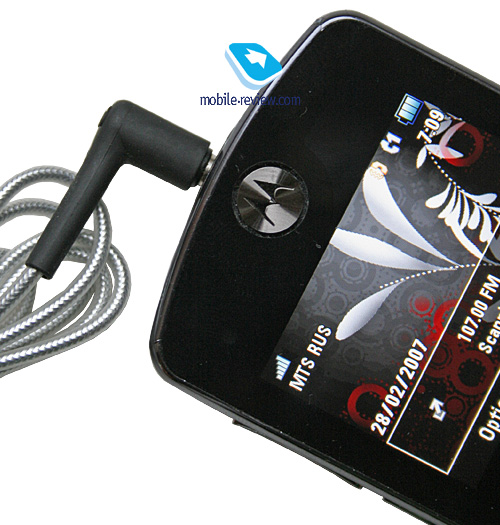
The right-hand side sports a slider key for switching the handset on and locking the keypad. In 2008 a lot of phone makers will be adopting this button: for instance, Samsung for its touch-screen models, Sony Ericsson, and Nokia for select solutions in its portfolio.
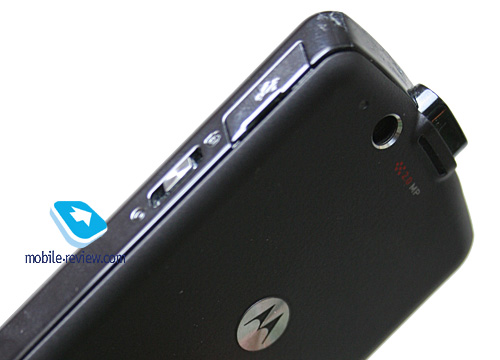
Sitting on the left is the volume rocker as well as the voice button that enables voice dialing and starts up the sound recorder, depending on what menu you are in. The microphone is housed at the bottom of the handset.
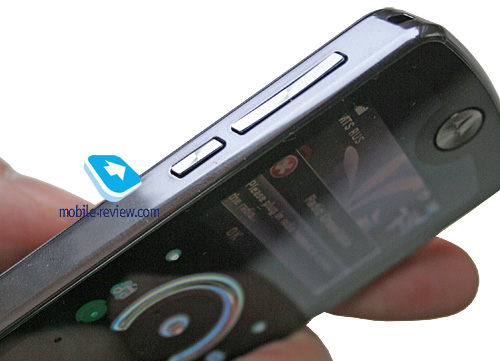
The E8 feels robust; all parts are well-adjusted, so we experienced no movement from poorly fitting parts.
As of today the ROKR E8 comes only in black, but it is quite possible that more colors will be available in the future.
Back to the table of contents >>>
Display
The ROKR E8’s display is notable for employing the landscape layout, while otherwise being a typical 2-inch QVGA screen (240x320 pixels, 40x30 mm) with up to 262 K colors on offer. It gets washed out in the sun, yet remains readable, and we had no issues with it while indoors. The display can accommodate up to 10 text and 3 service lines. The ambient light sensor adjusts only the keypad's backlighting level and has nothing to do with the phone’s screen.
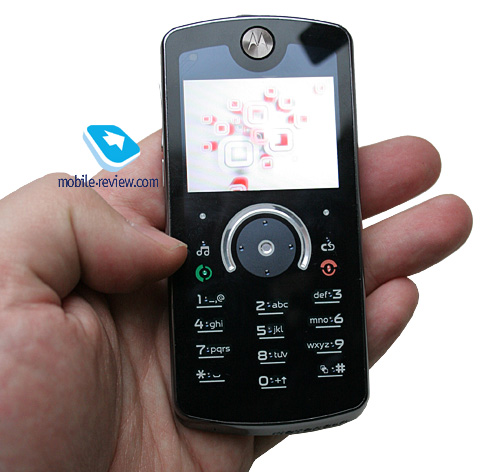
Back to the table of contents >>>
Keypad
This model packs a unique keypad simply because, while it is in the standby mode, you see no key captions because, well … there are none! The handset morphs keys into what you currently need in any given menu. For example, when typing up a text message, you will see a conventional number pad there, and for music, the E8 will present you with player controls. Motorola calls this technology ModeShift - the handset knows what layout to activate and when. For the time being they employ only particular preset layouts, whereas they might well go for real displays down the road. There is no doubt this technology is a sort of a saving grace, as it will allow for multi-localization of keypads, compact QWERTY keyboards or task-relevant buttons. Once the pioneer of the mobile world, Motorola still has this crown on with this technology. Another thing of note is that ModeShift will become one of the constituents of Motorola’s Morphing technology in the future.

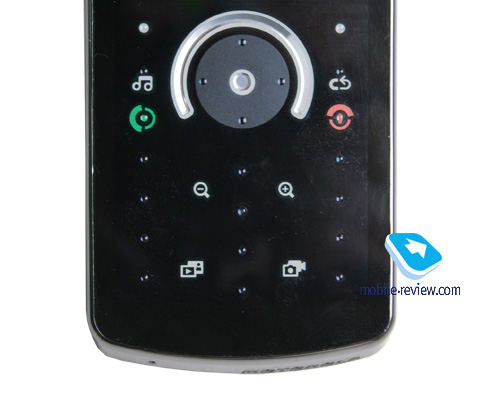
The plastic finish of the keypad has tiny bulges next to the virtual buttons; what is more, the slab feels somewhat spring-loaded, meaning that while texting or dialing a number you will experience something relatively new as it will actually move up and down under your fingers, which means that you will actually feel the buttons being pressed. Now let us be honest with you, this keypad is not what we are used to, but it is not a fiddly gimmick, rather it is actually quite easy to use in practice. It will take you a mere day to get the hang of the ROKR E8’s keypad and then you will feel right at home with it.
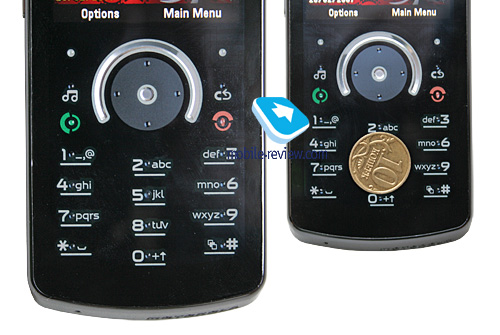
Among the keypad’s possible drawbacks is that the key captions are visible only while the bright-blue backlighting is on, but on the other hand, they remain discernible even under direct sunlight.
Other unusual aspects about the handset include the touch-sensitive semi-circle (or as Motorola calls it, the Omega Wheel, for its resemblance with the corresponding letter of the Greek alphabet), which is used for adjusting volume in the music player or jumping between radio stations. You can also page through any list found in the E8 with this wheel, or browse photos in the gallery. All in all it is quite handy, although not always very intuitive.
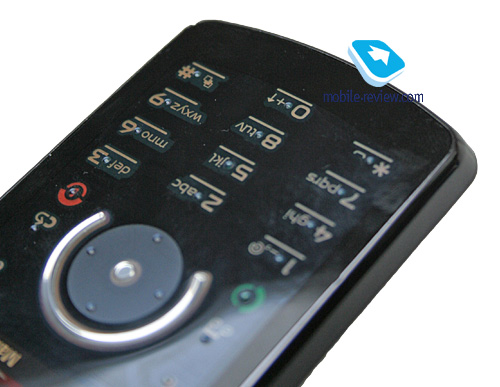

Back to the table of contents >>>
Memory, memory cards
The handset comes with around 26 Mb of internal memory, which can be used both for applications and data storage purposes. The bundled storage of 2Gb is identified as the first memory card, at least that's how it is displayed in the file manager. Next to the battery is the microSD memory expansion slot that supports high-capacity units as well (we successfully used and 8 Gb card with the E8), however, there is no hotswap capability, but this is pretty evident.
Back to the table of contents >>>
Battery
The E8 utilizes a 970 mAh Li-Ion battery. According to the maker it can keep the phone up and running for up to 350 hours in standby or provide 7 hours of talk time. In Moscow we squeezed around 3 days out of the handset when we subjected it to some light usage (an hour of calls, a couple of messages). Should you get heavier on it, its battery life will drop down to 1-2 days. It takes the U9 roughly two hours to charge from empty to full.
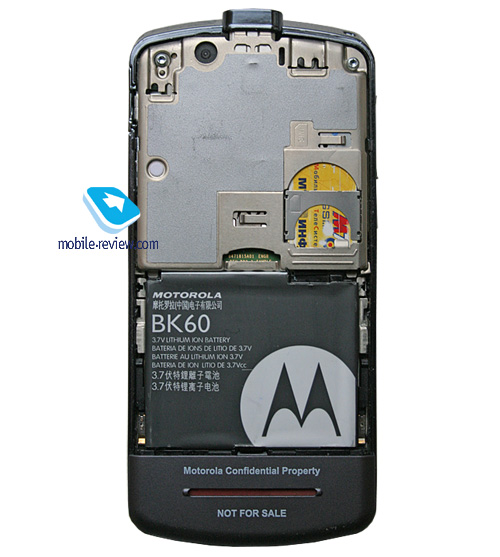
Positioned as a music phone, the E8 should be able to handle long non-stop music sessions, and we got around 14,5 hours of music out of it, which is obviously not the best performance we have seen, but by far not the worst either.
Back to the table of contents >>>
Camera
The handset comes with a 2 Mpix flash-less camera module. The camera quality is quite mediocre (worse than the MOTO U9), and while the shots look fine on the E8’s decent display, when viewed on PC they become much less vibrant and sharp.
Three image resolutions are available – Large (2MP), Medium (1.3 MP), Small (480x640), and X-Small (240x320 pixels). Two levels of compression are at your disposal, and other settings allow turning off the shutter sound; vary exposure from -2 to +2, and selecting the lighting type (auto, sunny, cloudy, indoors, office). The handset also features a self-timer.
Best results are achieved when shooting in bright sunlight, whereas in other cases the color saturation is far from satisfactory. The good thing about the U9’s camera is that photos are shown in full-screen mode when working with the camera, while icons and captions are semitransparent. You can change the lighting settings by pressing the navigation button up or down, as well as select various effects (Black&White, Negative, Sepia, Solarize). There is a x8 digital zoom at your disposal, and a multi-shot mode.
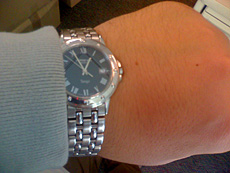 |
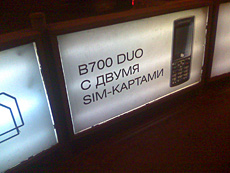 |
| (+) maximize, 1600õ1200, JPEG |
(+) maximize, 1600õ1200, JPEG |
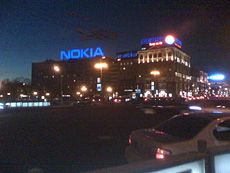 |
 |
| (+) maximize, 1600õ1200, JPEG |
(+) maximize, 1600õ1200, JPEG |
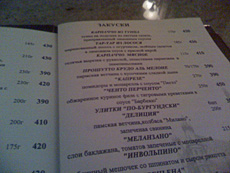 |
 |
| (+) maximize, 1600õ1200, JPEG |
(+) maximize, 1600õ1200, JPEG |
 |
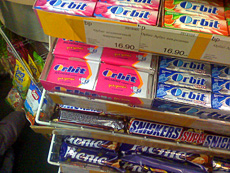 |
| (+) maximize, 1600õ1200, JPEG |
(+) maximize, 1600õ1200, JPEG |
 |
 |
| (+) maximize, 1600õ1200, JPEG |
(+) maximize, 1600õ1200, JPEG |
The handset records video at a resolution of 176x144, with the duration of a video clip limited only by the amount of memory available. The quality you get with the E8 isn’t exactly stellar and can’t compete with many contemporary solutions, although it actually trumps some, as manufacturers occasionally deem the video recording feature useless.
Back to the table of contents >>>
Performance
Just like the Motorola RAZR2 V8, this handset enjoys an ARM 11 CPU, running at 500 Mhz, which still gives it the highest performance rates on the market. The ROKR E8 is on par with the U9 on this front.
Back to the table of contents >>>
USB, Bluetooth
USB. The ROKR E8 employs a microUSB slot, which is a bit slimmer and thus differs from the miniUSBs we all have gotten used to. The vendor says that the handset supports USB High Speed 2.0, and it does indeed. In the USB Mass Storage or MTP modes the USB connection offers average data transfer speeds of around 1100-1250 Kb/s. That means that copying a 75 Mb album takes less than a minute, which is quite an adequate performance for today’s handsets and one of the market’s best offerings. Upon a USB connection in the two modes mentioned above, the handset’s functionality gets disabled, although you will still be able to receive calls, as the phone’s wireless radio remains online.
In the settings you can find several options for connecting the U9 to a PC: Media Sync (MTP protocol), Memory Card (USB Mass Storage, no drivers required), Tools (synchronization with Mobile Phone Tools), Modem&Tools (synchronization and modem mode), and USB Printing.
Speaking of other amenities, we can’t overlook the full-fledged support for Windows Media Player 11, which means you are free to use your PC to compose your own playlists and then transfer them onto the handset. In the future the support for this player will become par for the course in all Motorola-branded devices.
Bluetooth. The E8 comes with EDR-enabled Bluetooth 2.0, and the list of paired device can be up to 16 devices long. The following profiles are supported:
- Dial-Up Networking Profile
- Generic Access Profile
- Generic Object Exchange Profile
- Object Push Profile
- Serial Port Profile
- Handsfree Profile
- Headset Profile
- Synchronization Profile
- Basic Image Profile
- File Transfer Profile
- HID (host) Profile
- Stereo Advanced Audio Distribution Profile
- Advanced Audio/Video Remote Conference Profile
The Bluetooth implementation is, as always though, nothing to complain about. We encountered no issues with handling this type of connections, but on the downside there is a limit as to how long the handset can remain visible so it isn’t possible to keep it in ‘always visible’ mode.
Back to the table of contents >>>
Music department
The player installed in the E8 is pretty much standard for the platform it runs on, but unlike the RAZR2 V8 it also packs in equalizers, which puts it in the same league as the MOTO U9. They make some difference in the way the handset sounds, however, using them is not always justified. In terms of the sound experience, the ROKR E8 is one of the best offerings out there today; it offers decent volume and stellar sound quality. Not only is it on a par with the Samsung i450, the E8 even surpasses it, jumping right onto the next rung of the ladder with dedicated mp3-players, and we are not being easy on it, that’s the way it is.
The handset’s FM-radio can work in the background, with a plugged-in headset doubling as an antenna. The radio found in the E8 has no bells and whistles on offer, although it’s said that it comes with Song ID (similar to Track ID), but we couldn't find this feature in any of the available units.
Alexander Dembovsky’s take on the ROKR E8. The Motorola E8’s results in our RMAA tests can be easily compared with music players from top manufacturers, including Apple, Samsung and Creative – the fact of the matter is that there is only a handful of handsets that fare just as well on this front. The standard 3,5 mm jack also adds to the E8’s brilliance of sound, as it allows to avoid accidental signal distortions. Plus, the handset’s tweaked software allocates more resources to sound processing.
On the other hand, though, passing our battery of tests with flying colors doesn’t necessarily mean the phone’s real sound will appeal to everyone – some deemed it a tad too heavy or, on the contrary, lackluster In these cases, you can opt for equalizers or, which I personally find more suitable, good custom earphones befitting your music style. The E8’s output signal strength is pretty decent too, which enables it to handle most professional headphones.
General performance
| Frequency response (from 40 Hz to 15 kHz), dB: |
+0.10, -0.73 | Good |
| Noise level, dB (A): |
-83.1 | Good |
| Dynamic range, dB (A): |
83.8 | Good |
| THD, %: |
0.0033 | Very good |
| IMD, %: |
0.035 | Good |
| Stereo crosstalk, dB: |
-83.6 | Very good |
| Intermodulation at 10 kHz, %: |
76.120 | Very bad |
General performance: Good
Frequency response

Noise level

Back to the table of contents >>>
Screenshots
Back to the table of contents >>>
Impressions
The reception quality of the E8 was never an issue, for it is a typical Motorola branded phone. The loudspeaker’s volume is pretty average, though you won’t miss calls when the handset is in your pockets; the vibro alert is moderate strength-wise, or perhaps a tad better than that.
The ROKR E8 is sublime as far as sound quality goes, but all in all it is quite a mixed bag. And you know why? Price. This device will retail for around 400 USD at best when it starts shipping early in March, and that’s without a memory card, meaning that the user will end up with bare 2 Gb of bundled storage. For a pair of pretty mediocre default headphones and a couple of extra accessories, this is steep. By the time the ROKR E8 arrives, many offerings from other manufacturers will have already got equally hefty price tags or slipped below this level, whereas ‘sound quality’ is always elusive and can’t be assessed while the phone still sits on a shelf. So many will be looking at design and price, and on these fronts, the Motorola ROKR E8 doesn’t have anything special going for it. Expect to see the ROKR E8 in stock no earlier than late February.
And it is a pity, especially seeing that the ROKR E8 hasn’t changed at all since the time of my first hands-on session with it back in February 2007. A year was spent in anticipation of a miracle, which, after all, was meant to happen, and realistically, what miracle were we expecting to come? The company’s management can’t comprehend the basics of the mobile phone market, and this sad fact keeps giving birth to outdated projects like this one at an alarming rate. As far as the Motorola E8 is concerned, the best way to go would be to keep its functionality, yet dump the bundled storage, the Omega Wheel, which is obviously an expensive component, and include a big memory card in the box. In other words, it is the way of creating advantages that would be apparent to consumers.
Last, but not least is that the ROKR E8 employs the L7.1 platform, although functionality-wise it is the same as the MOTO U9 with its version L6.3, so I’m quite befuddled what new abilities this release brings.
P.S. It is sad to witness how, month by month, Motorola’s management team destroys every last bit of what used to constitute the company's spirit, instead of trying to find a way to turn the tide and steer the company out of the crisis it finds itself in. Problems keep piling up, and they don’t see the real market, preferring the world of numbers and facts that exist only on paper. That's the bitter truth and it is hard to escape from it. If the company doesn't give its future some deep thought, then its tomorrow may not come. But that will be the topic for a separate write-up.
Related links:
Back to the table of contents >>>
Eldar Murtazin ([email protected])
Translated by Oleg Kononosov ([email protected])
Published — 14 January 2008
Have something to add?! Write us... [email protected]
|
News:
[ 31-07 16:21 ]Sir Jony Ive: Apple Isn't In It For The Money
[ 31-07 13:34 ]Video: Nokia Designer Interviews
[ 31-07 13:10 ]RIM To Layoff 3,000 More Employees
[ 30-07 20:59 ]Video: iPhone 5 Housing Shown Off
[ 30-07 19:12 ]Android Fortunes Decline In U.S.
[ 25-07 16:18 ]Why Apple Is Suing Samsung?
[ 25-07 15:53 ]A Few Choice Quotes About Apple ... By Samsung
[ 23-07 20:25 ]Russian iOS Hacker Calls It A Day
[ 23-07 17:40 ]Video: It's Still Not Out, But Galaxy Note 10.1 Gets An Ad
[ 19-07 19:10 ]Another Loss For Nokia: $1 Billion Down In Q2
[ 19-07 17:22 ]British Judge Orders Apple To Run Ads Saying Samsung Did Not Copy Them
[ 19-07 16:57 ]iPhone 5 To Feature Nano-SIM Cards
[ 18-07 14:20 ]What The iPad Could Have Looked Like ...
[ 18-07 13:25 ]App Store Hack Is Still Going Strong Despite Apple's Best Efforts
[ 13-07 12:34 ]Infographic: The (Hypothetical) Sale Of RIM
[ 13-07 11:10 ]Video: iPhone Hacker Makes In-App Purchases Free
[ 12-07 19:50 ]iPhone 5 Images Leak Again
[ 12-07 17:51 ]Android Takes 50%+ Of U.S. And Europe
[ 11-07 16:02 ]Apple Involved In 60% Of Patent Suits
[ 11-07 13:14 ]Video: Kindle Fire Gets A Jelly Bean
Subscribe
|
